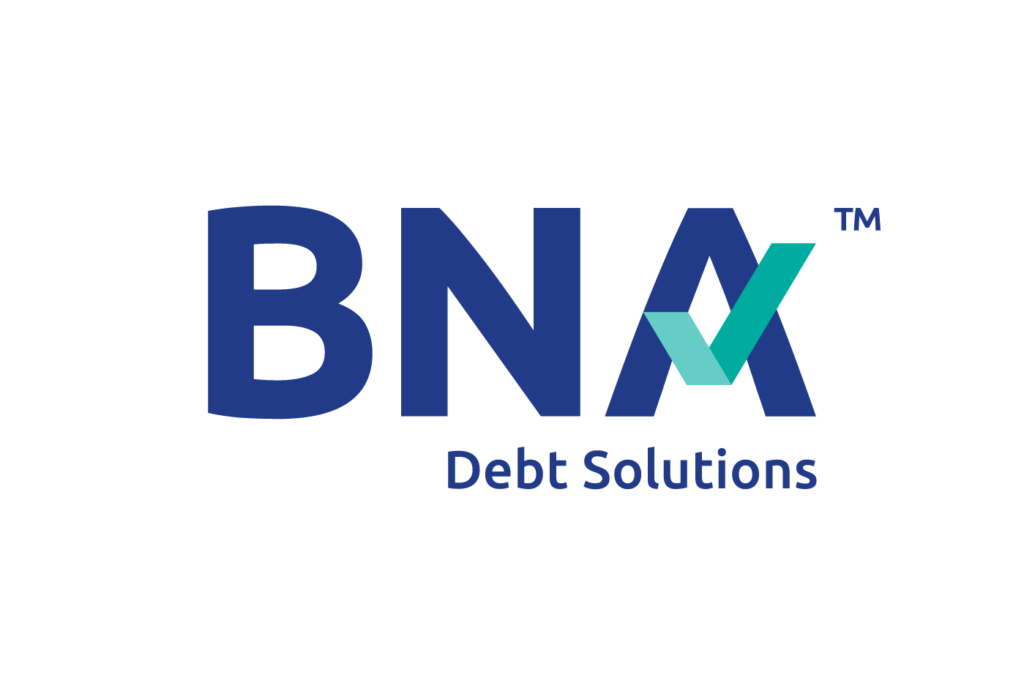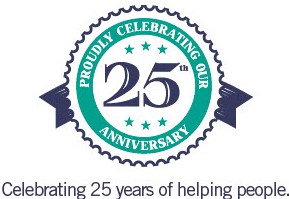Why People Consider Paying Their Mortgage with a Credit Card
It’s the end of the month. Bills are piling up, the mortgage payment date is marked on your calendar, and your credit card still has some available credit. The question sneaks in: Can I pay my home loan with a credit card… even just this once?
If you’re asking this, it’s not a failure. It’s a signal. A sign that cash flow is tight and you’re looking for breathing room. At BNA, we help Albertans make decisions that protect their homes and their future, not just for this month, but for the next twelve.
This guide explains what’s technically possible, why it often costs more than you expect, and the calmer, smarter personal finances moves to manage cash flow so you can pay your mortgage on time without causing a bigger problem later.
The Short Answer: Why Most Lenders Say No
Direct credit card payments? For most mortgage lenders, the answer is “No”; they don’t accept credit card payments as a payment method for mortgages, including all major banks and most credit unions/private lenders.
Where Albertans do manage it, it’s usually by (a) taking cash advances that later show up on your credit card bill and moving the funds to a bank account, or (b) using a third-party payment service that charges your card to make payments on the mortgage loan.
Both routes come with additional fees, often costly interest charges, and ultimately cost money, which is why we never recommend them as a “strategy.”
What You Need to Know Right Away
- Most mortgage lenders don’t accept credit cards; workarounds often add fees and may involve immediate interest charges.
- Cash advances are costly: they lack a grace period, have higher APRs, and come with extra fees.
- Credit card reward strategies often don’t work in Canada because issuers classify mortgage payments as cash-like transactions.
- A consumer proposal doesn’t impact your mortgage, but it can help stabilize cash flow by reducing unsecured payments.
- In Alberta, foreclosure is processed through the courts. Act early and explore your options.
Why Most Mortgage Companies Say “No” to Cards
- High processing costs: Credit card transaction fees (interchange, network, and processor fees) are high on large, recurring payments. For mortgage lenders, that’s money going out every month, so they prefer preauthorized debit or bank transfers instead.
- Risk and incentives: Allowing borrowers to swap lower-rate, secured mortgage debt for high-rate, unsecured credit card debt is risky for households and affects the industry’s image for mortgage lenders. In most cases, the industry standard in Canada is not to accept credit cards for mortgages.
Even if you find a workaround, you typically pay processing fees upfront and incur credit card interest if the balance isn’t paid off within the same billing cycle, and sometimes even if it is, depending on how the transaction is coded.
How People Try to Make It Work (and Why It’s Really Paying Interest on Interest on Interest)
1) Cash advance → bank account → pay the mortgage lender
You withdraw from your credit card, move the funds into your bank account, then use that to pay your mortgage.
- Interest starts immediately. Unlike purchases, cash advances, and most balance transfer checks, credit card interest has no grace period. You begin paying high interest the same day until the balance is fully repaid.
- Extra fees. Most cards charge a cash advance fee, and rewards rarely apply.
- The real problem: stacked costs. Your mortgage already has interest built into every payment. Using a cash advance to cover it means you’re now paying credit card interest on top of your mortgage interest — effectively paying interest on interest.
2) Third-party payment service charges your card and pays your lender
Some services let you pay bills (including rent and mortgage payments) with a credit card. They accept your card, then transfer the funds to your mortgage company.
- Processing fees every time. Typically 2.5-3% of the payment. On a $2,800 mortgage, that’s an extra $70–$84 every month.
- Rewards are often blocked. Issuers usually treat these as “cash-equivalent” transactions — meaning no points, no bonuses, and sometimes even immediate interest charges.
- The real problem: stacked costs again. You’re already paying mortgage interest. By adding a processing fee and possibly credit card interest, you’re layering a fee on top of interest on top of interest.
“But what about points or a welcome bonus?”
We see this often, especially from U.S. blogs promoting “rent payment/mortgage points plays” with a rewards credit card (like a “venture rewards credit card”). In Canada, issuer rules are stricter.
Many credit card companies categorize these as cash-like transactions or cash equivalents, which forfeit rewards and can start accruing interest immediately. Always review your credit card issuer’s terms in Canada before assuming you’ll earn valuable rewards on mortgage payments.
Even then, it’s usually not worth the risk once you factor in a card’s annual fee, the third-party surcharge, and the chance you won’t earn credit card rewards at all.
What It Means If You’re Considering Using a Credit Card for Housing
If you’re using a credit card to cover housing costs, it usually indicates cash flow issues. Two potential problems from this practice:
- Rate mismatch: Credit cards carry much higher interest rates than mortgages; using a card for housing increases your overall expenses.
- Credit score impact: A large charge can raise your credit utilization ratio (used/total credit limit). High utilization can lower your credit score, which may lead to higher borrowing costs later (e.g., home equity loans or renewals). (General credit scoring principles; see FCAC and bureaus’ guidance on utilization effects.)
A Better Question: How Can I Develop a Sustainable Plan?
At BNA, we help you look at the full picture:
- Income timing vs. payment timing: Can you adjust your monthly payment date to match your payday so that the billing cycle isn’t working against you?
- Unsecured debt pressure: Are credit card payments and payday loan balances draining the cash you need to cover your mortgage?
- Credit hygiene: Are there quick, reasonable fixes to keep credit utilization low and protect your credit report while we stabilize your finances?
- Options with guardrails: If using credit once helps you avoid a late mortgage payment, can you pay off the card in full next cycle? If not, we can create a different plan.
And just as importantly, here are a few reflection questions you can ask yourself:
- Do I need to build a clear monthly budget with my family to understand the actual cost of living in my home?
- Can I reduce or eliminate certain expenses to free up money for my mortgage?
- Do I need to explore better work, higher pay, or additional hours to keep up with housing costs?
- Should I talk to someone about restructuring other debts (like credit cards) so I can redirect more cash flow toward my mortgage?
How a Consumer Proposal Can Free Up Cash to Safeguard Your Mortgage
A consumer proposal is a federally regulated option for Canadians with unsecured debt. It does not include your mortgage (which is secured debt). However, it can consolidate credit cards, lines of credit, tax debts, and payday loans into one affordable monthly payment, often with 0% interest.
This can free up cash flow, so it’s easier to keep your mortgage payments current. If your situation is more complex or your debt level is higher, an LIT can discuss other proposal options that may be a better fit.
If you give back a secured item like a car and the sale doesn’t fully pay off the loan, the unpaid amount is the “deficiency.” Once the asset is gone, that balance becomes unsecured, which means it can usually be rolled into a consumer proposal.
What this looks like with BNA:
“At BNA, we understand that keeping your mortgage in good standing is the priority and it can stay that way. By helping you take control of unmanageable unsecured debt, we create the space for you to breathe easier and focus on the life you’re working toward.” BNA team
We’ll walk through your budget and current obligations together. From there, we’ll shape a plan to keep your mortgage on time, while a proposal tackles the high-interest debts that keep pulling your focus away from your home.
What Foreclosure Looks Like in Alberta and Why Acting Early Matters
Foreclosure in Alberta is judicial: proceedings go through the Court of King’s Bench under the Law of Property Act and related rules. This means understanding timelines, court filings, and most importantly, options. Early engagement keeps more doors open—such as forbearance, repayment plans, sale with dignity, or restructuring unsecured debt so the mortgage can be maintained.
Arrears context: Canada’s mortgage arrears rate remains low by historical standards, though it is monitored closely and varies by province. The Canadian Bankers Association updates arrears data regularly. CMHC publishes mortgage delinquency rates by province and Census Metropolitan Area (CMA). The key message: act early, long before you’re three months in arrears.
If you’re already behind in Alberta, don’t wait—connect with your lender and talk to an LIT about a proposal that stabilizes cash flow. If the situation is further along, the legal information from CPLEA (Centre for Public Legal Education Alberta) outlines the process and rights, and can help you ask the right questions.
The Real Costs of Paying a Mortgage with a Credit Card
1) Out-of-pocket fees you’ll notice immediately
| Cost | Where it appears | Why it stings |
| Third-party service fee | Each time a third-party service pays your mortgage provider. | ~2.5-3% per payment adds $75–$90 on a $3,000 mortgage every month. |
| Cash advance fee | When you pull from your credit limit. | A fixed or % fee plus interest from day one. |
| High APR on advances | Cash advances and cash-like transactions. | No grace period; rates are often higher than purchases. |
| Lost rewards | If coded as cash-equivalent purchases. | Often, there are no rewards/bonus points, and they may not count towards the welcome bonus. |
2) Credit score friction
A large charge increases your credit utilization, which can lower your credit score and make future borrowing (or a home equity loan) more expensive. If the card isn’t paid off before the billing cycle ends, that high utilization gets reported to credit bureaus.
Is There Ever a Good Reason to Do This? (Maybe…)
No. Even “just once” can mean fees, immediate interest (on cash-like transactions), and a spike in utilization that can ding your credit. There are safer ways to avoid a late mortgage payment. Talk to your lender early and fix cash flow at the source.
So, What Should You Do Instead? Here’s Our Advice at BNA
1) Stabilize the mortgage first
Reach out to your mortgage company early before missing a payment. Inquire about:
- Payment frequency adjustments (bi-weekly vs. monthly)
- Aligning due dates with paycheque schedules
- Short-term payment deferrals or interest-only options (lender-specific)
- Amortization changes during renewal
Lenders favor proactive borrowers over silent ones.
2) Shrink the unsecured avalanche
If credit cards and payday loans are making it hard to pay your mortgage, consider a consumer proposal to combine and lower those debts into one affordable monthly payment at 0% interest. Your mortgage remains separate from the proposal; your cash flow (and sleep) can improve.
3) Protect your credit health on purpose
- Aim to keep credit utilization below 30% on each card.
- Avoid cash advances, as they have no grace period, a higher APR, and fees.
- Make on-time credit card payments, auto-pay minimums if necessary, then top up manually.
4) If selling is on the table, sell with dignity
If keeping the home isn’t realistic, a controlled sale is better than a forced one. Connect with a trusted local realtor early to discuss pricing, timelines, and a listing strategy that helps you stay in control. A consumer proposal can still help settle unsecured debts and any deficiency that might come up elsewhere, so you can navigate the transition with clarity and stability.
A quick Alberta-focused scenario
Before: Mortgage $2,900 plus minimums of $800 on credit cards, shortfalls pile up, third-party fees nibble away cash flow, and using a card to plug gaps starts to look tempting..
After (proposal in place): One monthly payment of $300–$400 on unsecured debts, 0% interest. The mortgage becomes manageable, credit utilization decreases over time, and stress eases.
That’s the kind of cash flow management we aim for: not flashy like chasing credit card rewards, just steady and sustainable.
Here’s What One Alberta Client Had to Say
“I recently had the pleasure of working with BNA… the team was incredibly supportive and knowledgeable. Their dedication to helping clients achieve financial freedom is evident in every interaction… I’m now on a clear path toward financial stability.” Seifeladdl, Google review
This captures what matters: you’re heard, respected, and guided. No shame. Just a plan.
Common Questions from Alberta Homeowners
Can I make direct credit card payments to my mortgage provider?
Generally, no. Most mortgage lenders in Canada don’t accept credit cards. Workarounds like cash advances or third-party payment services come with fees and/or immediate interest.
Will I earn points if I pay my mortgage with a card through a third party?
Often, no. Many issuers treat these as cash-equivalent purchases that don’t earn rewards or bonus points and may not count toward account opening or welcome bonus targets.
Could this hurt my credit score?
Yes. Large card charges increase your credit utilization ratio, which can lower your scores if reported to credit bureaus before you pay it down.
Is a consumer proposal the same as refinancing into a larger mortgage?
No. A proposal restructures unsecured debts such as credit cards, lines of credit, and payday loans, not the mortgage. The goal is to free up room so you can comfortably make your mortgage payments.
What happens if I’m already in arrears in Alberta?
Alberta uses judicial foreclosure, which is court-driven. Act immediately, speak with your lender and an LIT, and review neutral legal resources like the CPLEA to understand the process and timelines.
Are arrears increasing?
Nationally, arrears remain low compared to historical levels, but they are closely monitored. Check the Canadian Bankers Association for updated stats and the CMHC for mortgage delinquency data by province or CMA.
Concerned About Using a Credit Card for Your Mortgage? Let’s Discuss Better Alternatives
If you’re searching online for “pay mortgage or home loan with credit card”, you’re carrying a lot. We understand. Let’s make your housing costs predictable again. If you’re concerned about using a credit card for your mortgage, you don’t have to figure it out alone. Speaking with a Licensed Insolvency Trustee can help you explore your options and protect your home.
We’ll outline your choices and, when appropriate, suggest a single, affordable monthly payment for your unsecured debts so you can pay your mortgage on time, every time.




